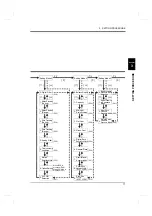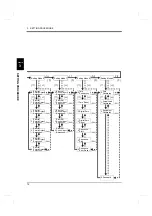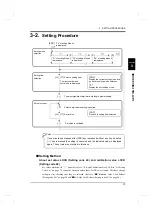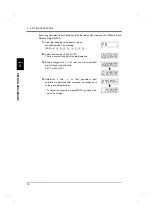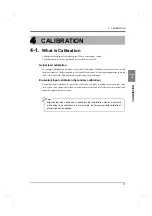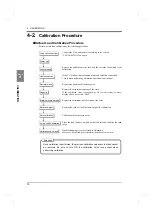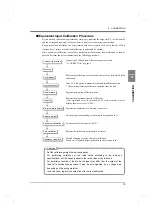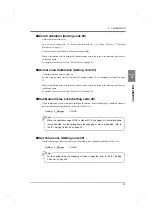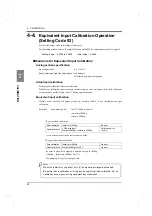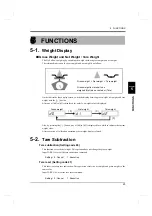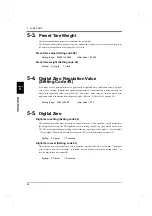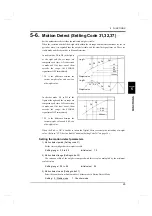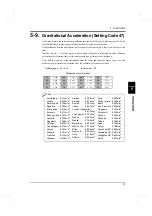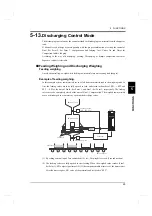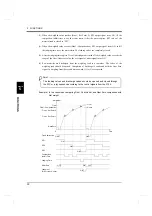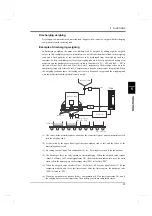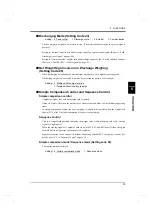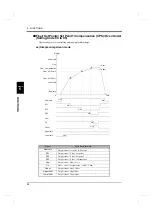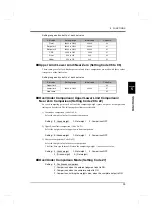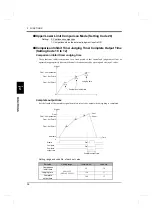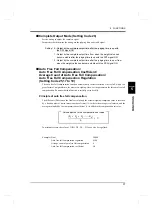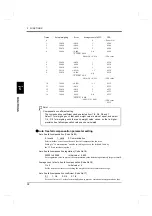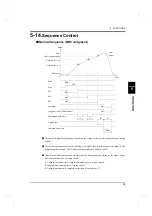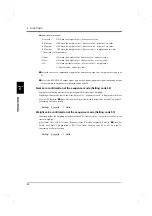
25
5
FUNCTIONS
25
FUNCTIONS
Chapter
5
5-6.
Motion Detect (Setting Code 31,32,37)
Set the parameters to detect that the indicated weight is stable.
When the variation width of the weight falls within the set range and that state continues for the set
period or more, it is regarded that the weight is stable, and the stability signal turns on. There are
stable mode and checker mode in Motion Detection.
In stable mode, D1 to D5 in the figure
at the right and the set range are
compared each time A/D conversion
is made, and if at least one of them
exceeds the range, the STABLE
signal turns OFF immediately.
* D1 is the difference between the
current weight value and one-sec-
old weight value.
In checker mode, D1 to D3 in the
figure at the right and the set range are
compared each time A/D conversion
is made, and if at least one of them
exceeds the range, the STABLE
signal turns OFF immediately.
* D1 is the difference between the
current weight value and 0.09-sec-
old weight value.
When the Stab. is ON, it enables to insert the Digital Filter to restrain the instability of weight
value. (Refer to "5-7.Filter in a Stable Condition (Setting Code 36)" on page 26.)
Setting the motion detect parameters
1) Motion detect period (Setting code 31)
Set the time to judge that the weight is stable.
Setting range/
0.0 to 9.9
Initial value/
1.5
2) Motion detect range (Setting code 32)
The variation width of the weight is compared with this set value multiplied by the minimum
scale division.
Setting range/
00 to 99
Initial value/
05
3) Motion detect mode (Setting code 37)
Select the condition from Stable mode or Checker mode in Motion Detect Mode.
Setting/
0: Stable mode
1: Checker mode
D1 D2
D3
D4
D5
D1 D2
D3
D4
D5
0.3
0.6
0.8
0.95
1.00sec.
Weight value
Weight value
<e.g.1>
<e.g.2>
D1
D2
D3
0.03
0.06
0.09sec.

